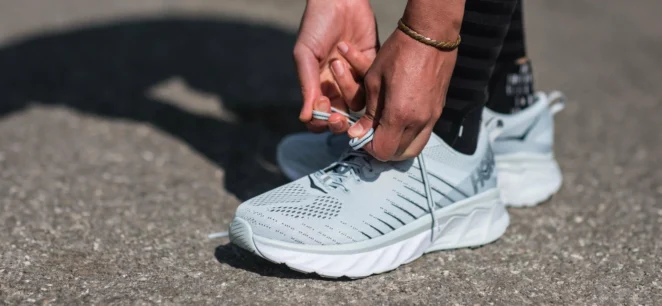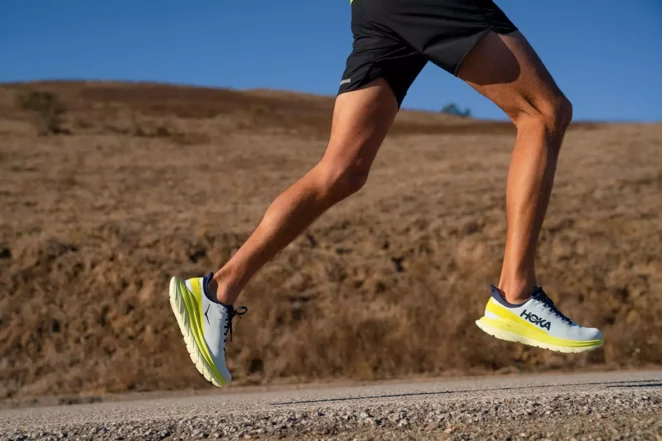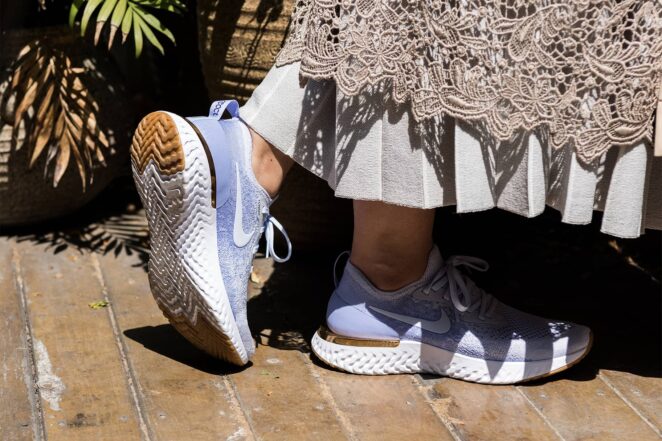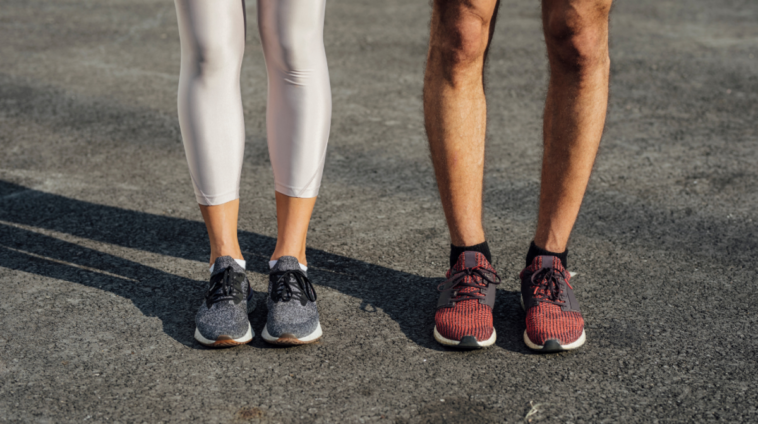There are different types of shoes in the market, each made for different purposes. But the most popular and common ones are running shoes. They are shock-resistant, durable and support great cushioning. Therefore, you might wonder if running shoes are suitable for standing all day.
Well, I have good news for you. Despite being great for running, running shoes can also be used for standing all day. They come with great features that help you provide great comfort during your job hours.
So without further ado, let’s start!
Are Running Shoes Good For Standing All Day?
When it comes to running shoes, the choice is limitless. Different companies offer different types of running shoes that are unique in their features and look.
Moreover, compared to other kinds of shoes, running shoes are more flexible and can be used in various ways.
One of the common ways is during work hours when you have to stand for an extended period.
These shoes are typically lightweight and flexible, allowing for natural movement of the foot and preventing stiffness and soreness.
How Running Shoes Provide Comfort During Long Hours of Standing?

Running shoes are designed to provide comfort during long hours of standing in several ways.
Firstly, they often feature a cushioned midsole, which helps to absorb shock when the foot hits the ground. This cushioning helps to reduce the impact on the feet, legs, and joints,which can help prevent pain and fatigue during extended periods of standing.
Secondly, running shoes also provide arch support, which helps to distribute the body’s weight evenly across the foot. This support prevents the arches from collapsing and reduces the stress on the feet, which can cause pain and discomfort during your job hours.
Last but not least, running shoes often have a wider toe box, which allows the toes to spread out and move naturally. This helps prevent cramped toes and blisters, which can be a common problem for individuals standing all day.
Are All Running Shoes Suitable For Standing All Day?
If you are thinking of using running shoes for your job then you might be wrong because not all running shoes are suitable for standing all day. It’s because different running shoes have different toe box widths.
Some running shoes are designed with a narrower toe box for a more streamlined and aerodynamic fit, while others have a wider toe box to provide more room for the toes to spread out and move naturally.
Furthermore, different running shoes have various levels of cushioning. The amount and type of cushioning in a running shoe can vary depending on the brand, model, and intended use.
Some running shoes are designed with more cushioning in the heel and forefoot to absorb shock and provide a more comfortable ride, while others may have less cushioning for a more responsive feel.
How To Choose The Best Running Shoe?

When choosing a running shoe for standing all day, it’s important to consider the following factors. This will assist you in making an informed decision.
- Comfort: Look for shoes with ample cushioning, support, and fit. The shoe should also have
enough room for your toes to move freely.
- Arch Support: If you have flat feet or high arches, look for shoes with appropriate arch support.
- Breathability: Shoes that are made with breathable materials will help keep your feet cool
and dry throughout the day.
- Durability: You’ll want a shoe that can withstand the wear and tear of standing all day, so
look for shoes made with durable materials.
- Flexibility: The shoe should be flexible enough to allow your foot to move naturally. 6. Traction: A shoe with good traction will help prevent slips and falls.
- Traction: A shoe with good traction will help prevent slips and falls.
- Brand and Model: It’s always a good idea to research the brand and model of the shoe you’re considering seeing what others have said about them.
Learn more about Finding The Right Fit For Your Running Shoes
Things To Avoid When Wearing Running Shoes All Day
Here are some of the precautions you need to take before wearing running shoes for all-day ● Don’t wear tight shoes, which can cause blisters or other foot injuries.
- Avoid wearing shoes that are worn out or have lost their shape. Old shoes may not provide the necessary support and cushioning, leading to discomfort and injury.
- Keep away from wearing shoes with a high-heel drop. This refers to the difference in height between the heel and the toe of the shoe.
Shoes with a high heel drop can cause strain on your calves and Achilles tendon.
- Avoid using shoes that come with a thin midsole. Thin midsoles may not absorb shock as effectively as thicker midsoles, which can cause more strain on your feet, ankles, and knees.
Conclusion
In conclusion, running shoes are an excellent option for standing all day as they have evolved. They are designed to provide ample cushioning and support for the feet.
However, not all running shoes are created equal, and choosing a shoe that fits properly and offers appropriate support for your individual needs is essential.
Look for shoes with good arch support, proper cushioning, and a comfortable fit.
Avoid shoes with thin midsoles or those that don’t fit properly. Choosing the right running shoe can help prevent foot pain and discomfort and stay comfortable throughout the day.
FAQs

Can I wear my running shoes to work?
Yes, you can wear running shoes to work, provided your workplace has a casual dress code or no specific footwear requirements.
Running shoes offer comfort and support, making them suitable for long hours of standing or walking during your workday.
When should you stop using running shoes?
You should stop using running shoes when they show significant wear, such as worn-out soles, damaged upper material, or decreased cushioning and support.
Typically, this occurs after 300-500 miles of use or around 6-12 months for regular runners, depending on running style and shoe quality.
Is it better to stand with or without shoes?
It is generally better to stand with shoes, especially when standing for long periods.
Quality footwear provides cushioning, arch support, and stability, which can help alleviate pressure on your feet, improve posture, and reduce the risk of developing foot problems or discomfort.
What to avoid in running shoes?
When selecting running shoes, avoid:
- Incorrect sizing: Ensure a comfortable fit with room for toe movement and snug heel support.
- Insufficient arch support: Pick shoes that cater to your specific arch type (neutral, high, or flat).
- Poor cushioning: Seek adequate cushioning to absorb impact and protect joints.
- Lack of stability: Choose shoes that provide stability and motion control for your running style.
- Worn-out shoes: Replace shoes after 300-500 miles or when showing significant wear, to prevent injuries.
What happens if you don’t run in running shoes?
If you don’t run in running shoes, you may experience:
- Increased risk of injury: Inadequate cushioning and support can lead to stress fractures, shin splints, and joint pain.
- Poor shock absorption: Non-running shoes may not absorb impact effectively, causing strain on your feet, ankles, knees, and hips.
- Insufficient traction: Without the proper grip, you risk slipping on different surfaces, potentially causing accidents.
- Reduced comfort: Running shoes are designed to provide optimal comfort for runners, while other shoes may cause discomfort during runs.
- Hindered performance: Running shoes are engineered for specific activities, and using non-running shoes can negatively affect your running efficiency and speed.




